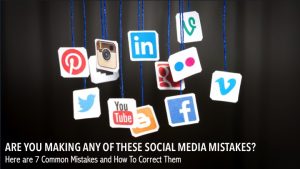

Join me with guest Michael Evanko, VP of Reading, Pennsylvania-based Fromm Electric Supply in this second installment of this discussion about the digital transformation in electrical distribution. If you’re still figuring out how to get started, tune in to learn:
- What to think about when adopting a new technology like CRM
- Why marketing must take a strategic leadership role in the digital transformation
- What to consider when deciding between outsourcing or adding marketing staff
- How (or if) one person can manage a distributor’s entire marketing function
- Why you can never stop learning
Michael discusses his experience and offers suggestions for those just beginning their digital journey. It’s not as difficult as you think if you have the right approach and the right people on your team.





 Tweets with images receive 18% more clicks, 89% more favorites and 150% more retweets, according to a recent study by software application designer Buffer. In late 2013, Twitter enabled users to add inline photos and Vine videos in tweets, available simply by updating the app. (Note: the graphic at right was created using https://infogr.am.)
Tweets with images receive 18% more clicks, 89% more favorites and 150% more retweets, according to a recent study by software application designer Buffer. In late 2013, Twitter enabled users to add inline photos and Vine videos in tweets, available simply by updating the app. (Note: the graphic at right was created using https://infogr.am.)





 Social media serves up new opportunities almost daily. Remember #TheDress? At 6:14 p.m. on Thursday, February 26, a 21-year-old Tumblr user asked for help resolving an argument over the color of her friend’s mother’s dress. “Is this dress white and gold, or blue and black?” asked Caitlin McNeill on
Social media serves up new opportunities almost daily. Remember #TheDress? At 6:14 p.m. on Thursday, February 26, a 21-year-old Tumblr user asked for help resolving an argument over the color of her friend’s mother’s dress. “Is this dress white and gold, or blue and black?” asked Caitlin McNeill on 


 10. Consider the consequences. Did the people at American Apparel think about the consequences of its Hurricane Sandy Sale, or did they just not care? Based on comments by now-fired CEO Dov Charney, the latter seems more likely.
10. Consider the consequences. Did the people at American Apparel think about the consequences of its Hurricane Sandy Sale, or did they just not care? Based on comments by now-fired CEO Dov Charney, the latter seems more likely.